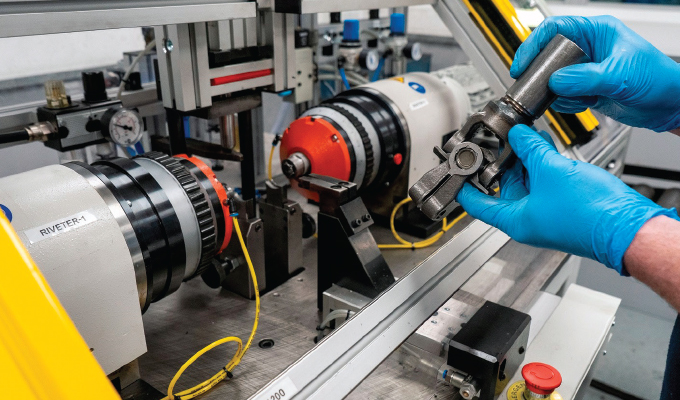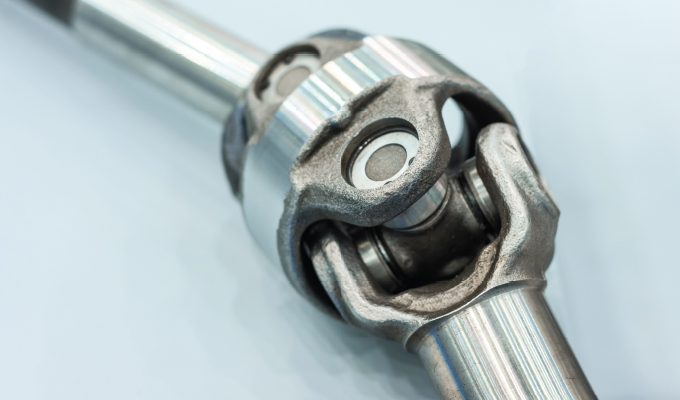The basic principles behind the universal joint have been around for centuries, but the methods behind their manufacture are changing. Here Nick Jordan, head of engineering and quality at steering system specialist, Pailton Engineering, explains how one assembly process at its headquarters in the UK has helped the company improve consistency and longevity of the universal joints it manufactures for specialist vehicles.
Universal joints play a critical role in the steering system. They must transmit rotational input torque through the entire steering system via varying angles at a consistent speed without resistance of radial play. Get it wrong, and the vehicle can suffer from reduced steering precision, leading to increased driver fatigue and vehicle maintenance costs.
Traditionally, universal joint assembly involved combining a bearing assembly inside two yokes with one high-pressure press by a highly skilled operator. This method of staking universal joints is still widely used across the vehicle parts industry and is fit for purpose, but it has its limitations. The first improvement being consistency: Manual processes are vulnerable to human error. The second being pressure: Applying such a high-pressure force to a material can affect the material’s physical integrity. If it can be avoided, it should be avoided.

QUALITY & CONSISTENCY
To combat this, Pailton Engineering invested in two bespoke universal joint staking rigs, transforming the manual process into an automated one. The two machines can run simultaneously to stake 19mm or 15mm universal joint variants. A huge benefit of these machines is the quality assurance and consistency of component assembly. Every universal joint in a batch is assembled to the exact same high-quality standards. Similarly, data recorded by the machines offers full traceability to show how the universal joint was built, including assembly pressure parameters.
With this more controlled method of staking universal joints, we’ve been able to significantly reduce the pressure used within the process compared with the manual method, while maintaining functionality and quality. This offers a multitude of benefits providing a higher quality and longer lasting part for the end-user.
Precise and accurate bearing assembly in the universal joint also enables smooth rotation over the life span of the steering system. This is especially important for vehicles where the steering tilt and telescope functions are adjusted daily for improved driving ergonomics, comfort, and safety.
INVEST IN PERFORMANCE
The equipment has been installed in its own purpose-built clean room work area that is solely focused on universal joint assembly. The investment in equipment and overall performance is making bearing installation and universal joint assembly an easier and more consistent process.
With the added benefits of automating this manufacturing process, vehicle OEMs can now focus on other options in universal joint sourcing. Whether they choose regreasable or service-free universal joints with high working angles and non-standard interface options, they can be confident they are getting quality parts.
Universal joints may have been around for a long time, but to produce high-quality bespoke steering parts for heavy vehicles and specialist vehicles, you need the latest manufacturing technology. By increasing the automation in our manufacturing processes, our new staking rigs are helping us satisfy the demands of vehicle OEMs for greater consistency, traceability, and longevity.
ABOUT THE AUTHOR
Nick Jordan is the head of engineering and quality at steering system specialist, Pailton Engineering. Pailton Engineering Ltd designs, tests, and delivers steering systems using state-of-the-art CAD, purpose-designed and built test facilities, and state-of-the-art manufacturing capability. Find out more about Pailton Engineering and its steering system design and manufacturing services, visit www.pailton.com.



